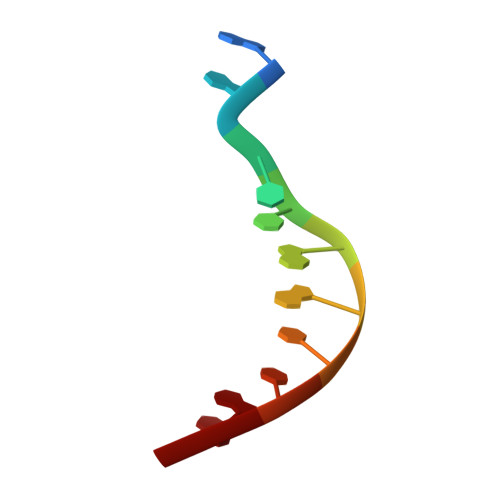Parallel and antiparallel (G.GC)2 triple helix fragments in a crystal structure.
Vlieghe, D., Van Meervelt, L., Dautant, A., Gallois, B., Precigoux, G., Kennard, O.(1996) Science 273: 1702-1705
- PubMed: 8781231
- DOI: https://doi.org/10.1126/science.273.5282.1702
- Primary Citation of Related Structures:
272D - PubMed Abstract:
Nucleic acid triplexes are formed by sequence-specific interactions between single-stranded polynucleotides and the double helix. These triplexes are implicated in genetic recombination in vivo and have application to areas that include genome analysis and antigene therapy. Despite the importance of the triple helix, only limited high-resolution structural information is available. The x-ray crystal structure of the oligonucleotide d(GGCCAATTGG) is described; it was designed to contain the d(G middle dotGC)2 fragment and thus provide the basic repeat unit of a DNA triple helix. Parameters derived from this crystal structure have made it possible to construct models of both parallel and antiparallel triple helices.
Organizational Affiliation:
Department of Chemistry, Katholieke Universiteit Leuven, Celestijnenlaan 200F, B-3001 Heverlee, Belgium. Structurale, EP CNRS, Université de Bordeaux.














